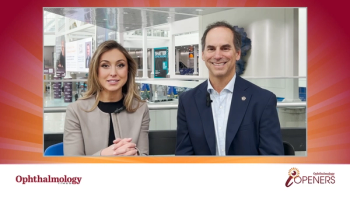
Pushing the non-covered services envelope into pseudophakic monovision
Some ophthalmologists have suggested applying the non-covered services concept, as stated in CMS rulings 05-01 and CMS-1536-R, to other procedures that alleviate the symptoms of presbyopia, specifically pseudophakic monovision-cataract surgery with IOLs to create monovision.
Key Points
Editor's Note: Dr. McInnes presents an overview of the inherent issues of coding and billing for covered and non-covered medical services performed. The examples in this article should not be interpreted as legal or reimbursement benchmarks. For definitive answers to questions about codes and coding, consult an attorney or a recognized authority on coding.
Most ophthalmologists involved with cataract surgery are aware of the Centers for Medicare & Medicaid Services (CMS) Ruling 05-01. This decision allows physicians and facilities to charge Medicare beneficiaries more than the limiting charge for non-covered services associated with the implantation of a presbyopia-correcting IOL. CMS currently recognizes three presbyopia-correcting IOLs (crystalens, eyeonics; AcrySof ReSTOR, Alcon Laboratories; ReZoom, Advanced Medical Optics). Recently, Ruling CMS-1536-R extended this policy to astigmatism-correcting IOLs, presumably including two specific lenses (AcrySof Toric, Alcon Laboratories; Staar Toric, Staar Surgical).
Some ophthalmologists have suggested applying the non-covered services concept to other procedures that alleviate the symptoms of presbyopia, specifically cataract surgery with IOLs to create monovision. This procedure, pseudophakic monovision, for patients with cataracts, generally involves bilateral cataract surgery with monofocal or conventional IOL implantation to yield emmetropia in one eye and mild-to-moderate myopia in the other eye.
Billing Medicare patients for already-covered services
Physicians and facilities can charge Medicare beneficiaries extra for items and services that are not covered by Medicare. When payments other than deductibles or coinsurance are requested for Medicare-covered services, however, physicians are liable for substantial penalties and potential exclusion from Medicare and other federal health-care programs.
In March 2004, the Department of Health and Human Services Office of the Inspector General (OIG) issued an alert regarding the potential liabilities for physicians posed by billing Medicare beneficiaries for services that are already covered by Medicare. In one case that generated a special OIG fraud alert, a physician offered patients a "personal health care medical care contract" that supposedly included non-covered services such as coordination of care with other providers, a comprehensive assessment and plan for optimum health, and extra time spent on patient care.
The OIG asserted that Medicare already covered some of those services and that the request for extra payment from the physician constituted a violation of the physician's assignment agreement. The physician in question paid a settlement and agreed to stop offering such services.
Pseudophakic monovision and non-covered services
General agreement exists among commentators about billing for non-covered services in the context of presbyopic IOL surgery and pseudophakic monovision: medically appropriate services that are not covered by Medicare are billable separately to the patient.1 For example, surgery to correct non-surgically induced astigmatism, whether incisional or laser, are non-covered refractive surgery procedures and, therefore, can be billed separately to the patient.
The difficulty with certain procedures is in identifying the non-covered aspects of the procedure when there is significant overlap between the steps of a fully Medicare-covered procedure and the procedure in question, which may be considered in some respects only partially covered.
The key question with pseudophakic monovision is whether and to what extent the procedure includes services that are not covered already by Medicare as a part of standard or conventional cataract surgery. Rulings 05-01 and CMS-1536-R refer to charges attributed to additional services associated with presbyopia-correcting IOLs and astigmatism-correcting IOLs. For the most part, however, the pseudophakic monovision procedure is exactly the same as conventional cataract surgery with an IOL, which is fully covered by Medicare. For instance, the type of IOL used in pseudophakic monovision and conventional cataract surgery is the same: a conventional monofocal IOL. Furthermore, the surgical technique is the same whether the surgeon is aiming for emmetropia in both eyes or emmetropia in one eye and mild to moderate myopia in the other eye.
Newsletter
Don’t miss out—get Ophthalmology Times updates on the latest clinical advancements and expert interviews, straight to your inbox.













































.png)


